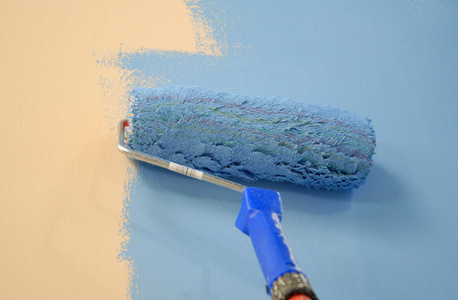 In a day when so much goes to waste and finances are tight, who wants to waste money on extra paint? If you are looking to buy paint for an interior painting project and don’t want to end up with either a surplus or shortage, you will need to know how many paint coatings are necessary and how many gallons it will take to complete the job. The answer to both the questions depends on several factors, but here are some guidelines that will help you decide how much you will need.
In a day when so much goes to waste and finances are tight, who wants to waste money on extra paint? If you are looking to buy paint for an interior painting project and don’t want to end up with either a surplus or shortage, you will need to know how many paint coatings are necessary and how many gallons it will take to complete the job. The answer to both the questions depends on several factors, but here are some guidelines that will help you decide how much you will need.
Calculating Coverage
The first step in deciding how many paint coatings you will need for a project is to measure the surface area to be painted. Measure the height and width of each wall you intend to paint, and then multiply these two numbers. Add up the total surface area of all the walls you wish to paint. Different brands of paint have different coverage, but when you go to buy your paint, look on the can for the approximate coverage and compare to the total surface area you plan to paint. If you plan to use multiple coats of paint (see below) simply times the total surface area by the number of coats you will apply.
Condition of Old Paint
If the previous paint coating is still in good condition, you should only need one new paint coating. However, if the existing paint is more than 10 years old or in disrepair, most painting contractors recommend using two coats for a better look and more enduring result. Also, the walls of newer houses are sometimes painted with a low quality builder’s paint (also called contractor’s grade paint). For new home owners who wish to repaint these walls, two coats are recommended.
Keeping the Same Color
If you are repainting an interior wall with the same color, usually only one paint coating is necessary. Nevertheless, if you have the funds, the outcome will always be superior and last longer if you apply two coats rather than one.
Changing Color
If you plan on significantly changing the color of your interior walls, you will need several paint coatings. This is true regardless of whether you are changing from a light shade to darker shade or vice versa. When colors are being changed considerably, painting contractors advise using a less expensive primer that is in-between the original and new shade you wish to apply. Using a “between-color” primer can save significantly on time and money.
Some colors have a naturally low-hide, meaning they don’t cover other colors well. The ability of paint to cover well is also dependent on the quality of the paint and whether it was premixed in a factory or custom mixed in a store. Be sure to talk to a professional painting company or a painting expert about the specific color change you want to make and what primer, if any, they recommend.
If you need more assistance on a painting project, feel free to contact us or get a free estimate.